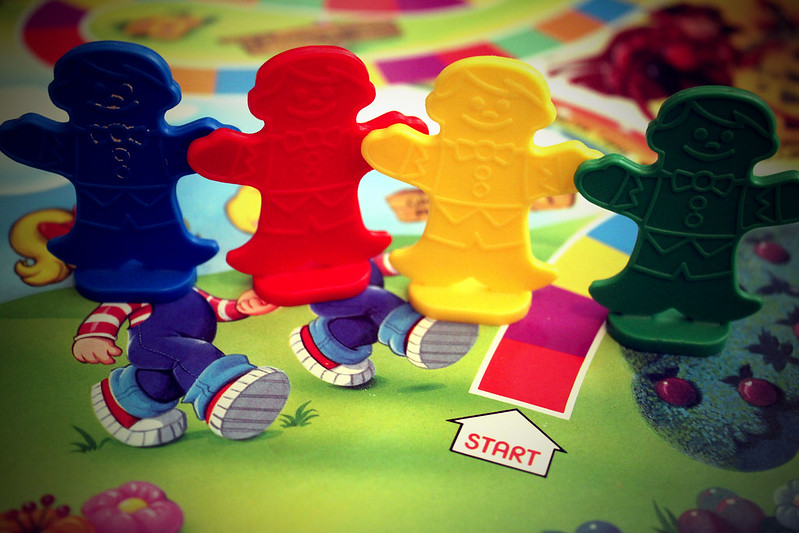It’s National Board Game Day.
So let’s talk about what was for millions of kids one of the first board games they ever played: Candy Land.
No, the game wasn’t a brilliant PR campaign for the sweets industry.
Candy Land was designed by a schoolteacher who was trying to help kids in the polio ward.
In the 1940s and 50s, polio was a major fear: it was dangerous, it wasn’t always clear how it spread, and there wasn’t yet a vaccine available.
Kids who contracted polio might spend time in a polio ward, and those who were exposed might have to quarantine.
And in many polio wards, there wasn’t a lot to do.
Patients could maybe read some books, or listen to the radio if there was one nearby, but mostly they had to find ways to entertain themselves.
Joni Mitchell, for example, once said she realized she wanted to sing when she was stuck in a polio ward over Christmas.
In 1948, San Diego schoolteacher Eleanor Abbott contracted polio herself and she ended up in a polio ward surrounded by young people.
We don’t have a lot of background information on Abbott’s life and career, but the Atlantic reports that she designed a game that would help kids pass the time while they were essentially stuck in place.
But she also designed one that let them break free of the ward and move around, if only in their imaginations.
If you remember how Candy Land works, everybody moves forward on this colorful winding path.
That’s a big contrast to the rows of hospital beds and iron lungs a kid would have seen in the ward.
Early versions of the board even showed kids in leg braces taking steps, and of course the end goal of the game was to get home.
Yes, there were a few obstacles that might slow players down, but they’re all candies.
Not the worst thing in the world to encounter.
The polio vaccine put an end to the epidemic, but the game continued.
Millions and millions of copies of Candy Land are out in the world, letting kids and families pass through peppermint forests and gumdrop mountains with help from their gingerbread guides.
Today in 1954… not a whole heck of a lot, apparently.
A scientist built a program to measure the importance of each day in the grand sweep of history.
That program found April 11, 1954 was the most boring day of all, with no major events to write home about.
Of course, as Gizmodo noted, being the most boring day ever is actually kind of notable, so is it really still the most boring?
Candy Land Was Invented for Polio Wards (The Atlantic)
The Most Boring Day In History Was April 11, 1954 (Gizmodo)

